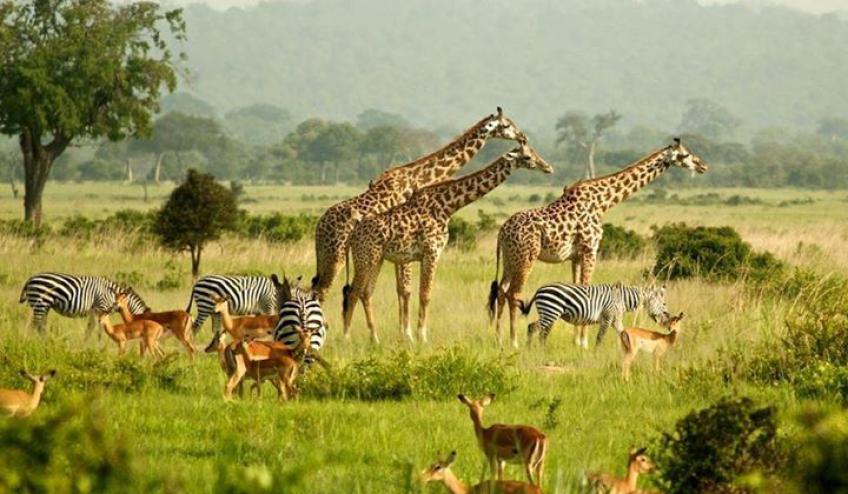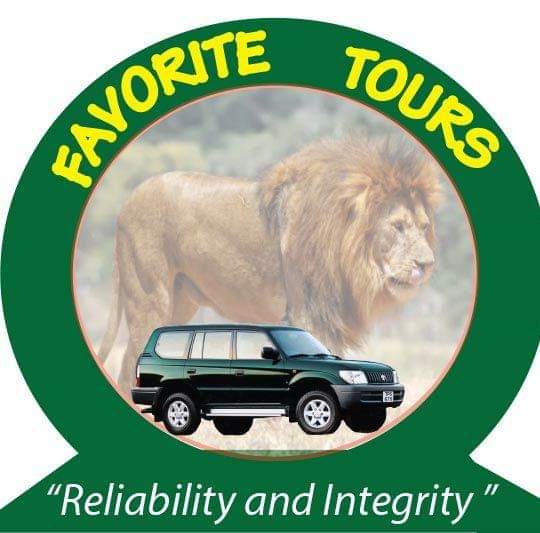
How to plan a trip to Queen Elizabeth National Park
It was my first night before visiting Queen Elizabeth National Park, and to save some costs, a friend and I decided to stay in a tented camp outside the premises of the park. With only shepherds herding sheep and some cows roaming around, there were few chances to spot big wild animals. Furthermore, loud music and people in a nearby town made me not notice that I was next to Uganda’s most biodiverse national park. I was unsure if that was the right decision and was constantly overthinking whether staying inside the park would have made a more significant difference.
Only around 11 PM, the music from the village stopped, and I could finally go to sleep. However, there was something outside that didn’t let me. These were not drunk people wandering around or some kids playing music on the radio. It was the sound of some laughing hyenas – one of the most terrifying but at the same time fascinating sounds I’ve ever heard. They were roaming freely around the camp, and I could listen to them laughing and growling and passing right next to my tent. I could hear their steps on the dry grass and how they moved from tent to tent before quietly leaving. But this surprise didn’t only happen on the first night; hippos and buffalos passed over several days around our tents.
This was my first impression of Queen Elizabeth National Park, where communities coexist with wildlife and where incredible animal encounters happen when you least expect it.

Understanding Queen Elizabeth National Park
Being the most popular national park in Uganda and famously known as the home of tree climbing lions, Queen Elizabeth National Park is on the bucket list of most travelers visiting Uganda. It is home to five different ecosystems, grassland, savannah, forest, wetland, and volcanic lakes, and a place where wildlife lovers will simply not want to leave.
Located around 400 km from Uganda’s capital, Kampala, Queen Elizabeth is not very accessible for a short day trip. Still, travelers can easily combine it with visits to Kibale National Park, the Bwindi Impenetrable Forest, and Lake Mburo National Park.
With such diverse landscapes and options to observe wildlife, it is challenging to plan a short itinerary in Queen Elizabeth National Park. This park is simply huge! The Kazinga Channel between Lake Edward and Lake George in the northwest of the park is perfect for travelers looking forward to boat cruises – hotspots for finding buffalos, hippos, crocodiles, and elephants. The Kyambura Gorge, in the northeast, is considered an excellent place for chimpanzee trekking and hiking. The savanna and swamp areas in the park’s central area are perfect for game drives and animal spotting.
Additionally, the crater lakes in the northeast part of Queen Elizabeth are excellent for an off-road drive and to view the fantastic panoramas of the area – this is also a perfect chance to spot leopards. And finally, the Ishashsa sector in the south offers the unique opportunity to spot tree-climbing lions – something that is relatively uncommon in Africa.

Accessibility
Located next to the border with DRC, Queen Elizabeth National Park was relatively inaccessible for many years. Civil conflict isolated the park for decades, and only until some years ago travelers couldn’t visit this part of Uganda independently or without a military escort.
Today the situation completely changed. It is one of the most secured parks in this part of Africa, and travelers can visit Queen Elizabeth National Park with their vehicles, on a private tour, or on group tours. With most operators adding Queen Elizabeth as part of their itineraries, the park has become a magnet for those who want to combine gorilla and chimpanzee trekking with game viewing and river cruises.
To get to Queen Elizabeth National Park, travelers are recommended to visit the park using a tour operator or travel with their own vehicle. It is the quickest and by far most convenient way to get there. For visitors interested in reaching the national park using public transportation, the cities of Kasese (1 hour) and Fort Portal (2-3 hours) are the closest urban areas to Queen Elizabeth. However, from these cities, you would have to arrange private transport to the national park and later a car that can take you on a game drive – something that can be pretty expensive if you don’t plan properly.
Unfortunately, Queen Elizabeth National Park does NOT offer game drives with their vehicles, so trying to book a car at the gate will be pointless. Travelers using their vehicles can also hire a ranger to guide them inside the park.

